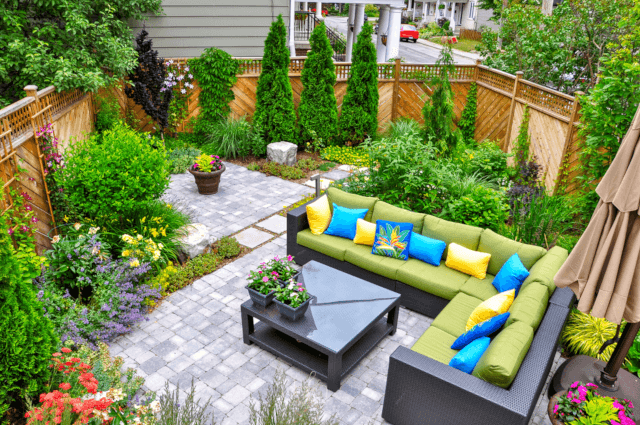For the avid do-it-yourself landscaper, the right tools are important. After all, if one wishes to save money on the expenses associated with having a well cared for yard, it is best to make sure that he or she has all of the tools necessary to create an attractive landscape. By understanding some of the most common tools used for basic landscaping needs, you can ensure that you have everything you need to keep your lawn in the best possible shape, bringing delight and distinction to your grounds, be they large or small.
Shovels, rakes, trowels, and hand cultivators. These are the most basic of tools when it comes to landscaping. Every home should be supplied with these basic implements. They make just about every landscaping endeavor possible. Shovels to remove sod and turn soil, as well as dig the holes necessary for fixtures like trees and hardscapes, Rakes are essential to smooth out planting beds and prepare ground for things like sod without packing the dirt. Trowels and hand cultivators allow you to perform minute work that requires more attention to detail. All of these tools are necessary to the proper functioning and care of a landscape.
Pruners and shears. These tools are used to improve the appearance of woody plants and trees. They keep plants from encroaching in other areas, and they also promote the overall health of the plants. They help maintain a neat appearance, and if you have topiary concerns, they are indispensable in maintaining a set shape. There are hand pruners, tools that help with the smaller branches and are easier to use, loppers for getting thicker branches that are to large for pruners, and even pruning saws that can help you with the toughest of branches. Hedge shears provide a way for hedges to be trimmed more conscientiously than with electric or gas-run trimmers (although these are widely available and can make maintaining hedges much easier).
Lawnmower. This is perhaps one of the most common and most obvious of landscaping tools. It is meant to keep the grass at a reasonable level, and to keep the lawn neat and healthy. Related to lawnmowers in the trimming department are things like weed wackers, which are very useful in keeping edges that can’t be cut by a mower nice and neat. Additionally, the use of some special machinery, designed to eliminate thick brush is useful to have on hand, even it is only in the form of a machine rented once a year.
Other tools of interest. Of course, there are specialty tools that may be needed depending upon on the features of your landscape. If you have a water fixture, it is important to make sure that you have the proper pumps and filters, and that you have little skimmers that can allow you to remove larger pieces of debris from the water. Automatic sprinklers can make watering the lawn and your other plants much easier, and you should have a garden hose for special watering needs. Regular household tools such as hammer and nails, levels, and drills can be helpful if you have built landscape features like patios, decks, pergolas, and trellises. They can also be useful in building things like containers and creating raised beds.
Wheelbarrow. A wheelbarrow will always be of infinite use for the avid landscaper and improver. Wheelbarrows are very useful for moving debris as well as bringing needed implements to their proper places. They haul dirt and bring in plants. They make it possible to for one person to carry a load that otherwise she or he would not be able to handle. For the serious landscaper, a wheelbarrow is indeed necessary.
When you have all of the tools necessary to take care of your landscape, then you are well rewarded for your hard work. Acquiring the more common tools can also save you money in the long run, as they can be used over and over again. Additionally, many of the more common landscape tools are fairly small in size and easy to store in a garage or a shed. As long as they are kept neatly arranged in place, they are easy to get to when needed, and not hard to find. Proper maintenance of you tools is important: keep them from becoming rusty, and make sure your lawnmower and other gas or electric implements are well oiled and always have plenty of gas. Proper care of your tools ensures that you will be able to properly care for your landscape.





